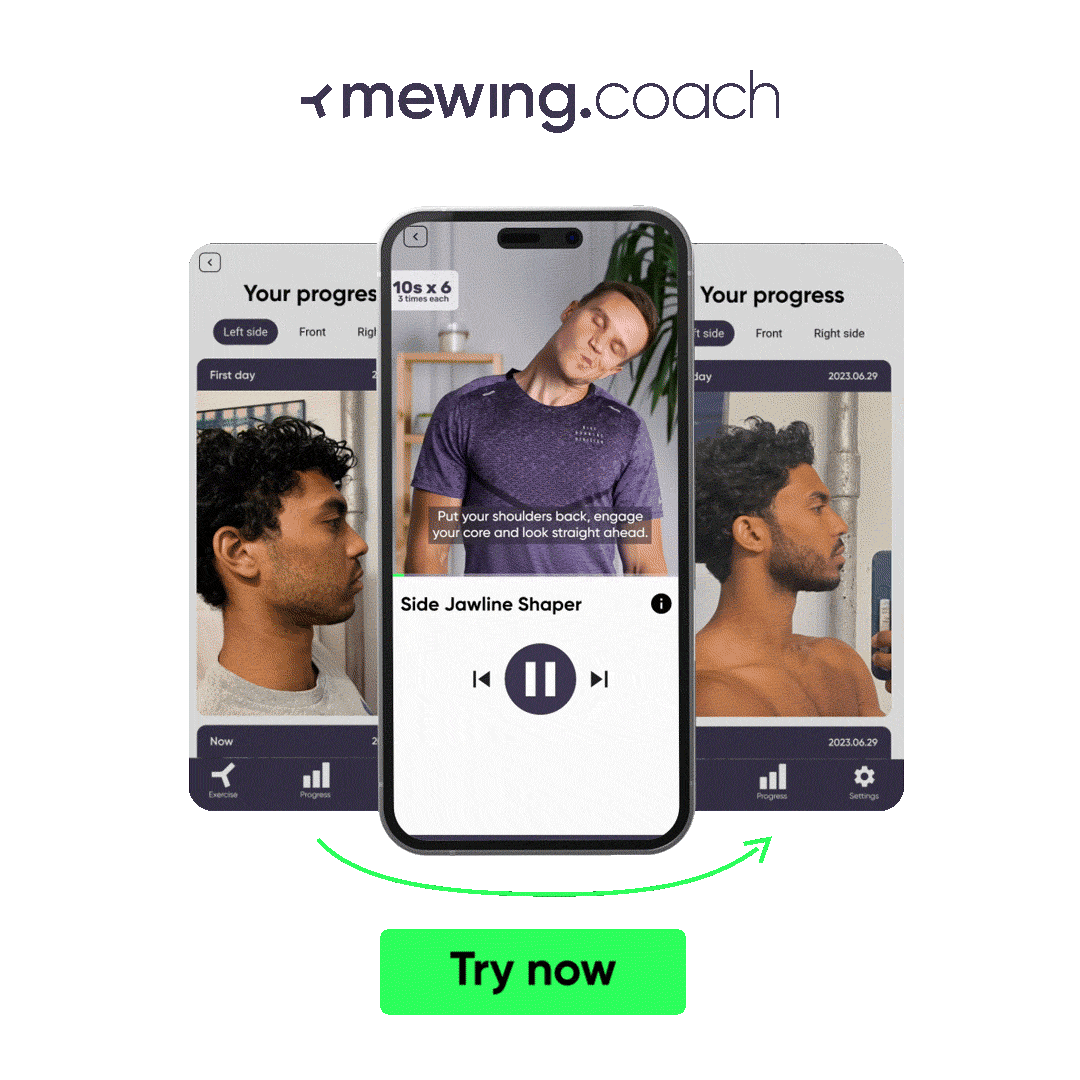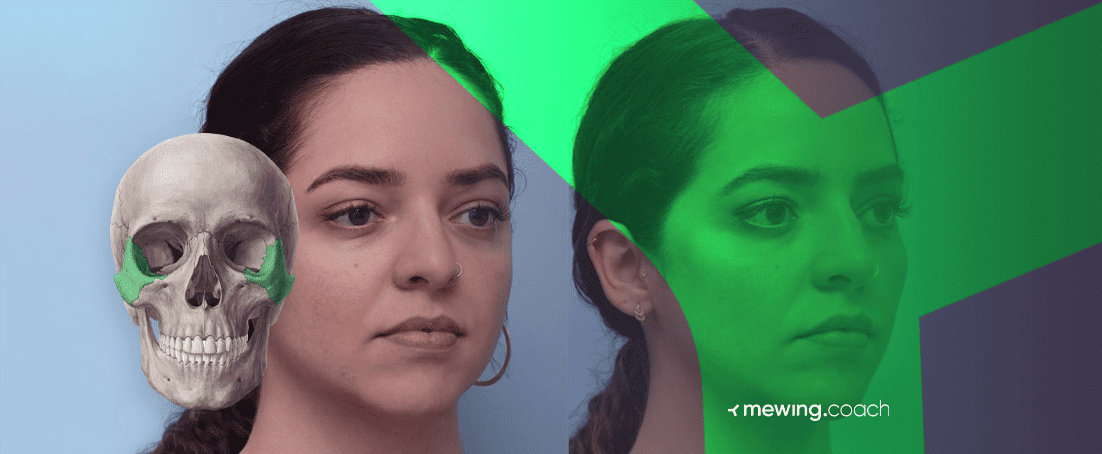
You have probably heard how praised high cheekbones are, especially in the fashion and beauty industry. The hype around high cheekbones has been around for a while, leaving women puzzled about whether they have high or low cheekbones.
To the surprise of many, scientific research shows high cheekbones as an indicator of beauty. Historically, men and women with higher cheekbones have been considered attractive and beautiful.
On the other hand, people with rather low cheekbones strive to achieve more prominent facial features by practicing mewing as the top cheekbone-defining exercise.
Skip the long read and learn how facial exercises can help you achieve your dream cheekbones. Start with a quick quiz below!
Here’s what you’ll also learn:
- 🤔 What makes the cheeks high or low?
- 📋 Differences between high and low cheekbones.
- 📖 How to tell if you have high cheekbones?
What Makes Cheekbones What They Are?
It has been proven that your ethnic predispositions and genetic background play a significant role in the look of your facial features, i.e., whether your cheekbone structure will render more prominent cheekbones vs. low cheekbones.
As defined in textbooks, cheekbones form the bone structure of your face underneath your epidermis. Malar bones are part of the human skull that add significant structure to the face. The higher the cheekbone, the higher the estrogen level.
In fact, a fraction of our brains still runs on primitive dispositions, thus correlating beauty with fertility. Moreover, according to academic research, scientists discovered that people with raised cheekbones appeal to others as more trustworthy. In terms of biology, high or low cheekbones are indicators of baby fat loss.
Different types of cheekbones, coupled with cheek muscles, tend to frame faces differently, accentuating particularities in our face shape. As your face ages, cheekbones become more prominent and define your overall appearance.
Types of Cheekbones
If you’ve only heard of high cheekbones, you might be surprised to learn there are more types. High, low, sunken, flat, prominent, and uneven are all types of cheekbones that rim the face structure.
However, it’s worth mentioning that as we reach middle age, our zygomatic bones, otherwise known as cheekbones, might become more prominent if we also lose weight. The different types of cheekbones depend on the zygomatic muscles, the malar bones, genetics, and ethnic groups.
Since cheekbones are the one facial feature people notice fast, those who are unhappy with the look of their cheekbones tend to practice mewing to tighten facial features.
High Cheekbones
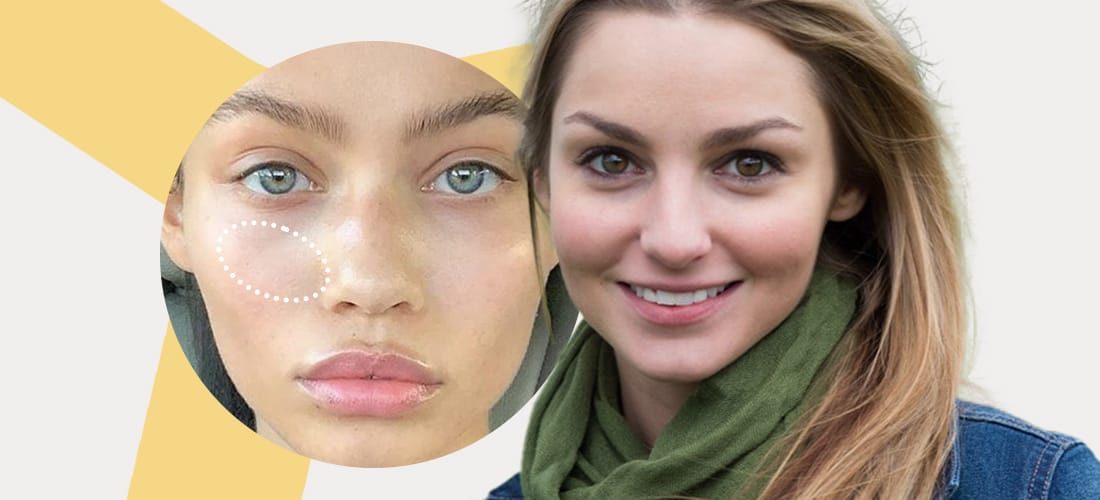
Naturally accentuated cheekbones are a beauty feature in different cultures and ethnic groups. Generally speaking, elevated zygomatic bones are features of people living in Central and Eastern Europe, as well as those of African descent. Asian societies are known for wider cheekbones.
From an anatomical point of view, high cheekbones are related to the proximity of the malar bones to the eyes. Moreover, high cheekbones tend to be more defined in men than in women. It’s important to mention that high cheekbones are not the same as strong cheekbones.
Low Cheekbones
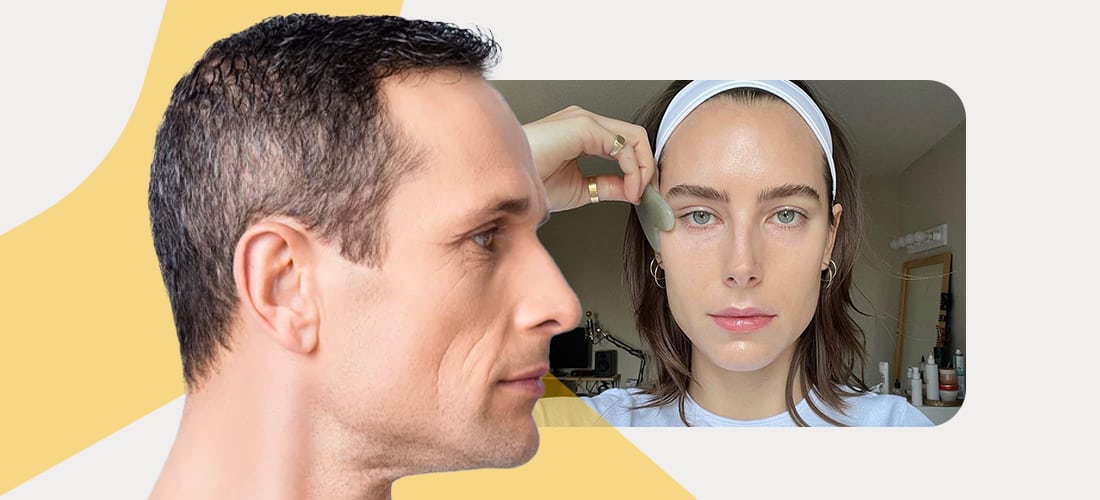
Biology and genetic background play a huge role in why you have lower cheekbones instead of higher ones. Ethnicity is also a key factor in the appearance of your natural look. The malar bone, another medical term for the zygomatic bone or cheekbone, determines the height of the cheekbones. West Asians are typically known for their low cheekbones.
Uneven Cheekbones
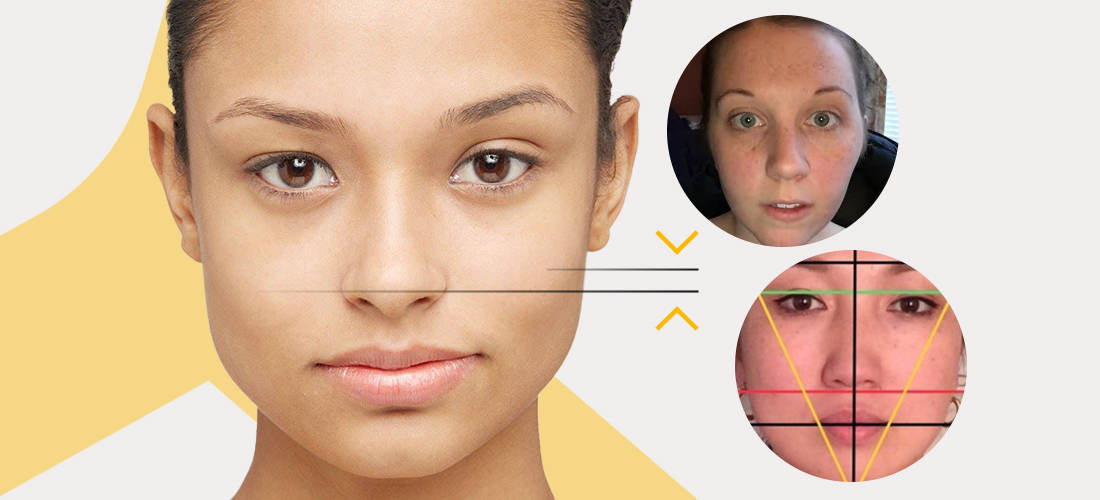
Asymmetrical or uneven cheekbones might be the result of aging, injury, smoking, and other contributing factors. However, if you’ve always had uneven cheekbones or mild cheekbone-related asymmetry, it’s nothing to be worried about.
Still, many people with uneven malar bones tend to resort to cosmetic treatments to achieve higher or lower cheekbones.
Prominent Cheekbones

Prominent cheekbones can be any cheekbone type, low or high, that stands out as a noticeable feature of your face. Both lower cheekbones and higher ones can be prominent. People with prominent cheekbones usually have hollow cheeks that further enhance the look of their cheekbones.
⚠️ Get the type of cheekbones you’ve always wanted ⚠️
Protruding Cheekbones
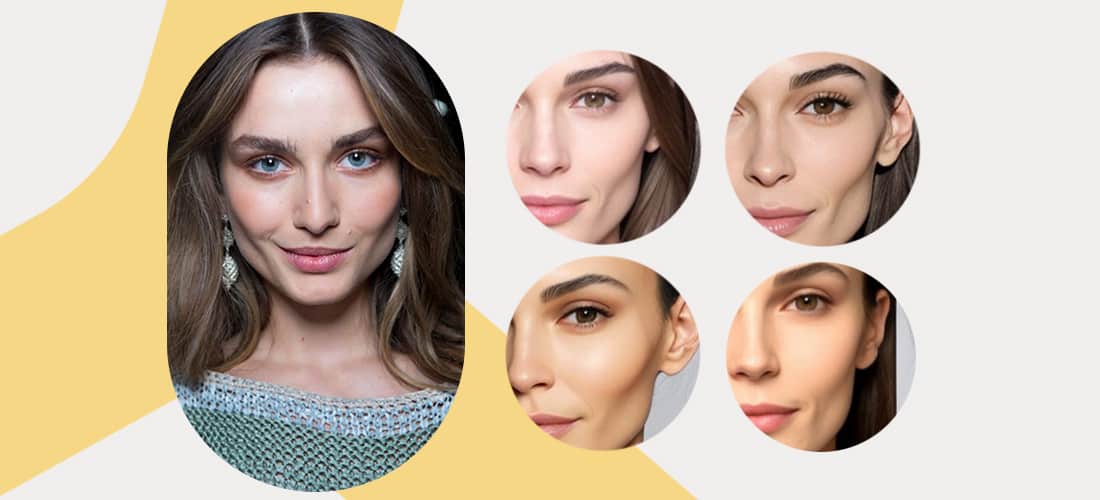
You can tell if someone has protruding cheekbones if they stand out as the most noticeable feature, as if they are poking out of their face. High cheekbones are most commonly considered protruding in slimmer individuals. Interesting to note is that people with protruding cheekbones are considered bossy and rather opinionated.
Sunken or Flat Cheekbones
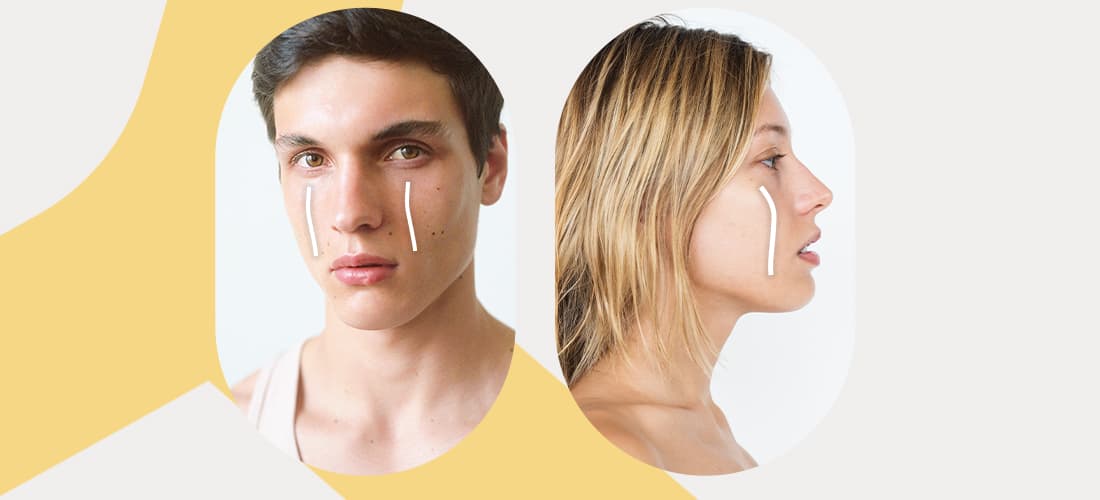
Flat cheekbones are one of the most common cheekbones types found in the majority of people worldwide. Other than genetics and ethnicity, sunken, flat cheekbones can be the result of aging, and there’s nothing wrong with it.
As a saggy neck and jaw skin is a giveaway of age, sunken cheekbones can do the same. Saggy jaw skin fixing can be done easily by using dermal fillers or mewing. People with poorly defined, unnoticeable cheekbones look rather flat in the face, lacking sideway projection. In such cases, dermal fillers can help add volume and plump the cheek area.
How to Determine Your Cheekbone Type
To identify your cheekbone type, stand in front of a mirror and locate your cheekbones with your fingers. If your cheekbones align with your nostrils or lower, they are considered low. High cheekbones are found at the level of your upper nose or closer to your eyes.
Signs of High Cheekbones
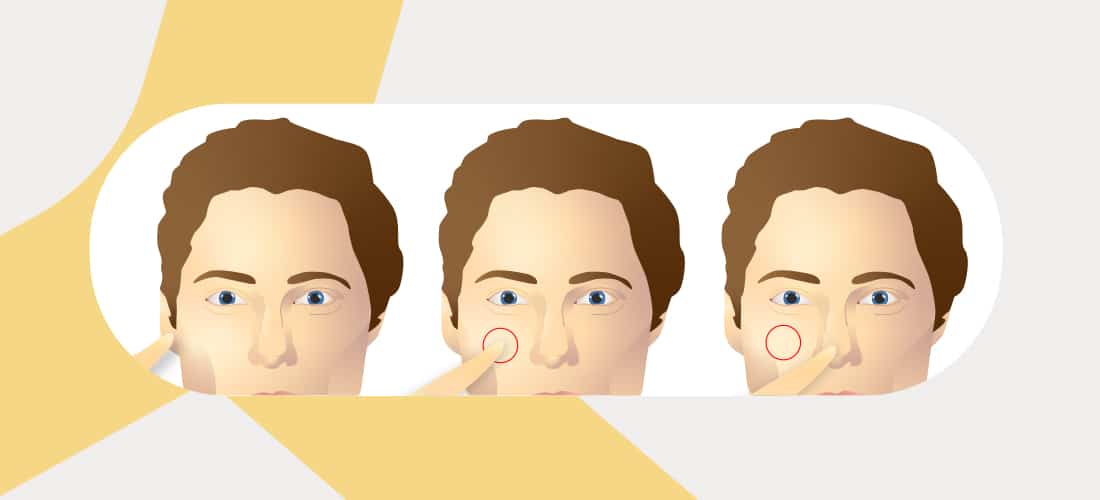
Use your index finger to move it from the ear to the nose and gently touch your cheekbone. If it feels like your cheekbone is right under your eye socket, congrats, you are blessed with high cheekbones!
Anatomically speaking, as a facial feature, a higher cheekbone will start right over the medial canthus of your eye. In essence, you can also tell if you have high cheekbones if the length of the ogee curve measures more than half across the middle of your face.
What Indicates Low Cheekbones
Again use your index finger from the ear to the nose and locate your cheekbone. If it happens to be lower at your nose, you have a low cheekbone. Lower cheekbones refer to the starting point being at the middle of your nose. Moreover, people with an oval face shape are prone to having lower cheekbones.
Also, lower malar bones render low cheekbones, so if your ogee curve length stops before the middle of your face, you can definitely say you have low cheekbones. A skinny person might have more prominent low cheekbones compared to people with rather large and voluminous cheeks.
Differences Between High and Low Cheekbones
Regarding the position of your facial bones, it’s important to understand that nobody has perfect cheekbones. Different face shapes have different bone structures, and that’s totally fine.
The main parting point in high cheekbones vs. low cheekbones is the structure of the facial bones. Also, a more defined jawline contributes to the prominence of your upper cheeks.
In a nutshell, if your malar bones are nearing your eyes, you have high cheekbones. On the other hand, lower malar bones refer to the zygomatic arches resting closer to the bottom part of your nose.
5 Ways to Alter Your Facial Structure and Gain High Cheekbones
Luckily for everyone looking to alter their facial structure, science and medicine have come up with practical and efficient ways to deliver the targeted results. From following tips on how to get cheekbones to enhancing the look of your flat cheekbones to resorting to cosmetic dermatology and cheek implants, there is a plethora of methods to try.
1. Mewing as the Ultimate Jaw and Cheekbone Defining Method
For some time now, mewing has been considered the most effective, nonsurgical method for strengthening the jaw muscles to gain definition. Since high cheekbones are considered a beauty trait, more and more men and women are looking to enhance their facial structure, cheekbones included.
The mewing effect on the chin includes a more defined and prominent jawline and sculpting of the cheekbones’ visual appeal. Mewing can help your flat cheeks gain high cheekbones without surgery. Just as mewing can help with tightening the saggy neck skin, it can help you get higher cheekbones with little effort.
To get the best results, you can download our Mewing.Coach app and mew anytime and anywhere.
2. Effective Plastic Surgery Procedures for Beautiful Cheekbones
Facial implants and fat transfers are the most common surgical procedures used to boost the look of flat-looking, unnoticeable malar bones. When done properly, plastic surgery procedures will enhance the volume and structure of the face, giving the cheekbones a more visual appeal.
Other than enhancing the look of their cheekbones, people also favor plastic surgery to achieve a more symmetrical face. Moreover, with plastic surgery, you can slightly lift the side eye area and achieve a natural-looking expression that complements the look of your upper cheeks.
Cheek implants are commonly inserted by an incision in the mouth cavity, but doctors also practice eyelid incision combined with eyelid surgery, if needed. Besides facial implants, people can also undergo fat grafting (using their own fat) to plump the cheek area and sculpt the cheekbones.
3. Dermal Fillers As the Most Common Cheekbone Enhancers
A dermal filler is a non-surgical aid helping people get higher cheekbones and adds more definition around the cheekbone area. Dermal fillers are injectables that add volume to the cheeks for more prominent definition and lift.
Most dermal fillers consist of hyaluronic acid, a natural compound of sugar in the connective tissues of our skin.
4. Different Facial Implants
People who resort to surgical procedures to get a high cheekbone usually favor cheek implants. As such, these implants work to plump flat cheeks and give patients a high cheekbone that will frame their face nicely and add to the overall body positivity of the patient. Cheek implants come in three different types, such as:
- Malar implants are inserted straight on the cheekbone to achieve high zygomatic arches.
- Submalar implants aim at delivering fuller cheeks and diminishing a sunken facial look.
- Combined cheek implants are inserted to achieve both a fuller face and distinguished cheekbones.
5. MakeUp Techniques and Facial Contouring for Accentuated Cheekbones
Nowadays, people are resorting to different methods and techniques to enhance their looks, especially around the eyes and cheekbones. A high cheekbone is a desired trait in women of every skin tone.
Makeup is one of the best, non-invasive cheek and cheekbone augmenting techniques. By using light and dark contouring shades, you’ll be able to accentuate your facial features as you want.
Quick FAQs About Cheekbones
The craze around cheekbones is totally understandable. We shortlisted the most frequently asked questions about cheekbones, mewing, and contouring, so have a look and see if you can find the answer to your question.
Do I have high cheekbones if my face is heart-shaped?
A heart-shaped face usually has fuller cheekbones, a pointy chin, and a wide forehead. Full, wide cheekbones mean they can easily be prominent if your cheeks aren’t overly voluminous.
Are low cheekbones not as appealing as high cheekbones?
No. This is a common misconception brought upon by the fashion industry Goliaths favoring high-cheeked models only. In fact, celebrities like Johnny Depp and Angelina Jolie rock low cheekbones and look absolutely stunning.
What separates low from high cheekbones?
In essence, the position of your malar bone determines how your cheeks will look. If your cheekbones are located closer to the bottom of your nose, you have lower cheekbones – the same facial bone structure as Cara Delevingne!
In the case your zygomatic bone starts right under your eye, you have high cheekbones! Just like Timothy Chalamet and Cameron Diaz!
The Verdict: How to Tell if You Have High Cheekbones vs. Low Cheekbones
If you wonder whether high cheekbones are rare, you should know that is not the case. People all over the world are born with high malar bones or have found an effective method, like mewing, to help them spruce up their looks.
When you’re young, your facial bones are still malleable, and it is easy to “modify” your looks. But as you are nearing a certain age or are losing weight rapidly, the bone structure in your face can change. Luckily, there are ways for all of us to try and boost our looks – some of them completely natural.
For instance, if you want the cheekbones you’ve always dreamed of, try mewing for a while. You can download our Mewing.Coach app and get the best out of the technique. Follow the guides and don’t miss out on the exercise – our daily Mewing.Coach reminder will always tell you when it’s time to start mewing! Start with a quiz below!

